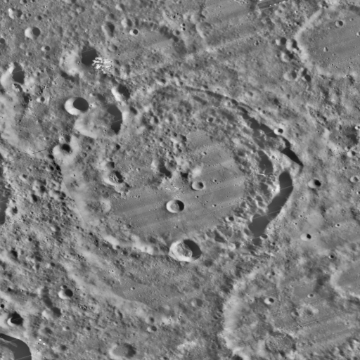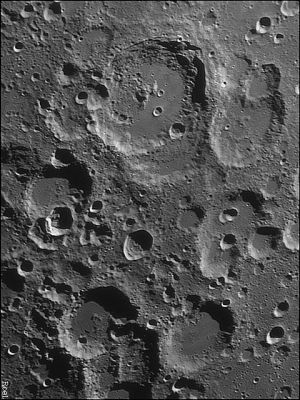Difference between revisions of "Maurolycus"
| Line 5: | Line 5: | ||
|} | |} | ||
<div id="toc"> | <div id="toc"> | ||
| − | [http://lpod.org/coppermine/displayimage.php?pos=-3709 [[Image:Maurolycus-Clementine.jpg|external image Maurolycus-Clementine.jpg]]][http://www.lpod.org/coppermine/displayimage.php?pid=991&fullsize=1 [[Image: | + | [http://lpod.org/coppermine/displayimage.php?pos=-3709 [[Image:Maurolycus-Clementine.jpg|external image Maurolycus-Clementine.jpg]]][http://www.lpod.org/coppermine/displayimage.php?pid=991&fullsize=1 [[Image:Normal_Maurolycus..jpg|external image normal_Maurolycus..jpg]]]<br /> ''left"[http://lpod.org/coppermine/displayimage.php?pos=-3709 Lunar Orbiter IV]; right: [http://lpod.org/coppermine/displayimage.php?pos=-991 Eric Roel]''<br /> <br /> |
==Images== | ==Images== | ||
[http://www.lpod.org/coppermine/thumbnails.php?album=search&type=full&search=Maurolycus LPOD Photo Gallery] [http://www.lpi.usra.edu/resources/lunar_orbiter/bin/srch_nam.shtml?Maurolycus%7C0 Lunar Orbiter Images] [http://www.lpi.usra.edu/resources/apollo/search/feature/?feature=Maurolycus Apollo Images]<br /> <br /> | [http://www.lpod.org/coppermine/thumbnails.php?album=search&type=full&search=Maurolycus LPOD Photo Gallery] [http://www.lpi.usra.edu/resources/lunar_orbiter/bin/srch_nam.shtml?Maurolycus%7C0 Lunar Orbiter Images] [http://www.lpi.usra.edu/resources/apollo/search/feature/?feature=Maurolycus Apollo Images]<br /> <br /> | ||
| Line 13: | Line 13: | ||
<br /> | <br /> | ||
==Description: Elger== | ==Description: Elger== | ||
| − | ''([http://the-moon.us/wiki/IAU% | + | ''([http://the-moon.us/wiki/IAU%20directions IAU Directions])'' MAUROLYCUS.--This unquestionably ranks as one of the grandest walled- plains on the moon's visible surface, and when viewed under a low sun presents a spectacle which is not easily effaced from the mind. Like so many of the great enclosures in the fourth quadrant, it impresses one with the notion that we have here the result of the crowding together of a number of large rings which, when they were in a semi-fluid or viscous condition, mutually deformed each other. It extends fully 150 miles from W. to E., and more from N. to S.; so it may be taken to include an area on the lunar globe which is, roughly speaking, equal to half the superficies of Ireland. This vast space, bounded by one of the loftiest, most massive, and prominently-terraced ramparts, includes ring-plains, craters, crater-rows, and valleys,--in short, almost every type of lunar formation. It towers on the W. to a height of nearly 14,000 feet above the interior, and on the E., according to Schmidt, to a still greater altitude. A fine rill-valley curves round the outer slope of the E. wall, just below its crest, which is an easy object in a 8 1/2 inch reflector when the opposite border is on the morning terminator, and could doubtless be seen in a smaller instrument; and there is an especially brilliant crater on the S. border, which is not visible till a somewhat later stage of sunrise. The central mountain is of great altitude, its loftiest peaks standing out amid the shadow long before a ray of sunlight has reached the lower slopes of the walls. It is associated with a number of smaller elevations. I have seen three considerable craters and several smaller ones in the interior.<br /> <br /> |
==Description: Wikipedia== | ==Description: Wikipedia== | ||
[http://en.wikipedia.org/wiki/Maurolycus_(crater) Maurolycus]<br /> <br /> | [http://en.wikipedia.org/wiki/Maurolycus_(crater) Maurolycus]<br /> <br /> | ||
==Additional Information== | ==Additional Information== | ||
| − | * Depth data from [http://the-moon.us/wiki/Kurt%20Fisher% | + | * Depth data from [http://the-moon.us/wiki/Kurt%20Fisher%20Crater%20Depths Kurt Fisher database] |
** Westfall, 2000: 4.73 km | ** Westfall, 2000: 4.73 km | ||
** Cherrington, 1969: 5.09 km | ** Cherrington, 1969: 5.09 km | ||
Latest revision as of 02:04, 16 April 2018
Contents
Maurolycus
| Lat: 42.0°S, Long: 14.0°E, Diam: 114 km, Depth: 4.73 km, Rükl: 66 |


left"Lunar Orbiter IV; right: Eric Roel
Images
LPOD Photo Gallery Lunar Orbiter Images Apollo Images
Maps
(LAC zone 113D1) LAC map Geologic map
Description
Description: Elger
(IAU Directions) MAUROLYCUS.--This unquestionably ranks as one of the grandest walled- plains on the moon's visible surface, and when viewed under a low sun presents a spectacle which is not easily effaced from the mind. Like so many of the great enclosures in the fourth quadrant, it impresses one with the notion that we have here the result of the crowding together of a number of large rings which, when they were in a semi-fluid or viscous condition, mutually deformed each other. It extends fully 150 miles from W. to E., and more from N. to S.; so it may be taken to include an area on the lunar globe which is, roughly speaking, equal to half the superficies of Ireland. This vast space, bounded by one of the loftiest, most massive, and prominently-terraced ramparts, includes ring-plains, craters, crater-rows, and valleys,--in short, almost every type of lunar formation. It towers on the W. to a height of nearly 14,000 feet above the interior, and on the E., according to Schmidt, to a still greater altitude. A fine rill-valley curves round the outer slope of the E. wall, just below its crest, which is an easy object in a 8 1/2 inch reflector when the opposite border is on the morning terminator, and could doubtless be seen in a smaller instrument; and there is an especially brilliant crater on the S. border, which is not visible till a somewhat later stage of sunrise. The central mountain is of great altitude, its loftiest peaks standing out amid the shadow long before a ray of sunlight has reached the lower slopes of the walls. It is associated with a number of smaller elevations. I have seen three considerable craters and several smaller ones in the interior.
Description: Wikipedia
Additional Information
- Depth data from Kurt Fisher database
- Westfall, 2000: 4.73 km
- Cherrington, 1969: 5.09 km
- Central peak composition: A (Tompkins & Pieters, 1999)
- Dark spots Maurolycus A and F, see LPOD Whitewashed!
Nomenclature
Francesco Maurolico (Franciscus Maurolycus) (September 16, 1494 - July 21, 1575) was an Italian mathematician and astronomer. Throughout his lifetime, he made contributions to the fields of geometry, optics, conics, mechanics, music, and astronomy.
He was the classic Renaissance man. He ran the local mint. He tutored the sons of the aristocracy. He gave lectures at the local (Messina, Italy) university. He corresponded with Clavius and observed what came to be known as Tycho's supernova in Cassiopeia in 1572. He published extensively in math and physics, but also published at least one map and one piece of music. The Galileo Project once again has a good entry on his life, and the Maurolycus wikipedia article lists the following accomplishments and publications:
"Maurolico's Photismi de lumine et umbra concerns the refraction of light and attempted to explain the natural phenomenon of the rainbow. It was completed in 1521 but was published posthumously in 1611. He also studied the camera obscura. His Arithmeticorum libri duo (1575) includes the first known proof by mathematical induction. His Opuscola mathematica (1575) attempted to calculate the barycenter of various bodies (pyramid, parabola, etc.) In his Sicanicarum rerum compendium, he presented the history of Sicily . . . Maurolico published a Cosmographia in which he described a methodology for measuring the earth, which was later employed by Jean Picard in measuring the meridian in 1670. Maurolico published an edition of Aristotle's Mechanics, and a work on music. He summarized Ortelius's Theatrum orbis terrarum and also wrote Grammatica rudimenta (1528) and De lineis horariis. He made a map of Sicily, which was published in 1575. Maurolico translated the ancient texts of Theodosius of Bithynia, Menelaus of Alexandria, Autolycus of Pitane, Euclid, Apollonius of Perga and Archimedes."
The Maurolycus Project at an Italian university sponsors electronic versions of Maurolycus' writings, but the English language page seems to be a broken link. They do, however, have an extensive bibliography, mostly in Italian and French, but there are also several English insertions. There is an article in Physics 16 (1974): 149-98 by Paul Rose called "Works of Francesco Maurolico" which might be available via ebsco host or another online catalog of articles. There is also at least one English translation of his work on the physics of optics: The Photismi de Lumine of Maurolycus: A Chapter in Late Midieval Optics, published in 1940 with Maurolycus listed as the author and Henry Crew as translator. It's available in libraries, but is most likely not in print.
LPOD Articles
Flows and Falling Rock.
Nope
More Highland Plutons (dark spots A and F at Maurolycus, photographed during Full Moon)
Whitewashed! (dark spots A and F at Maurolycus)
Lunar 100
L45: Region of saturation cratering.
Bibliography